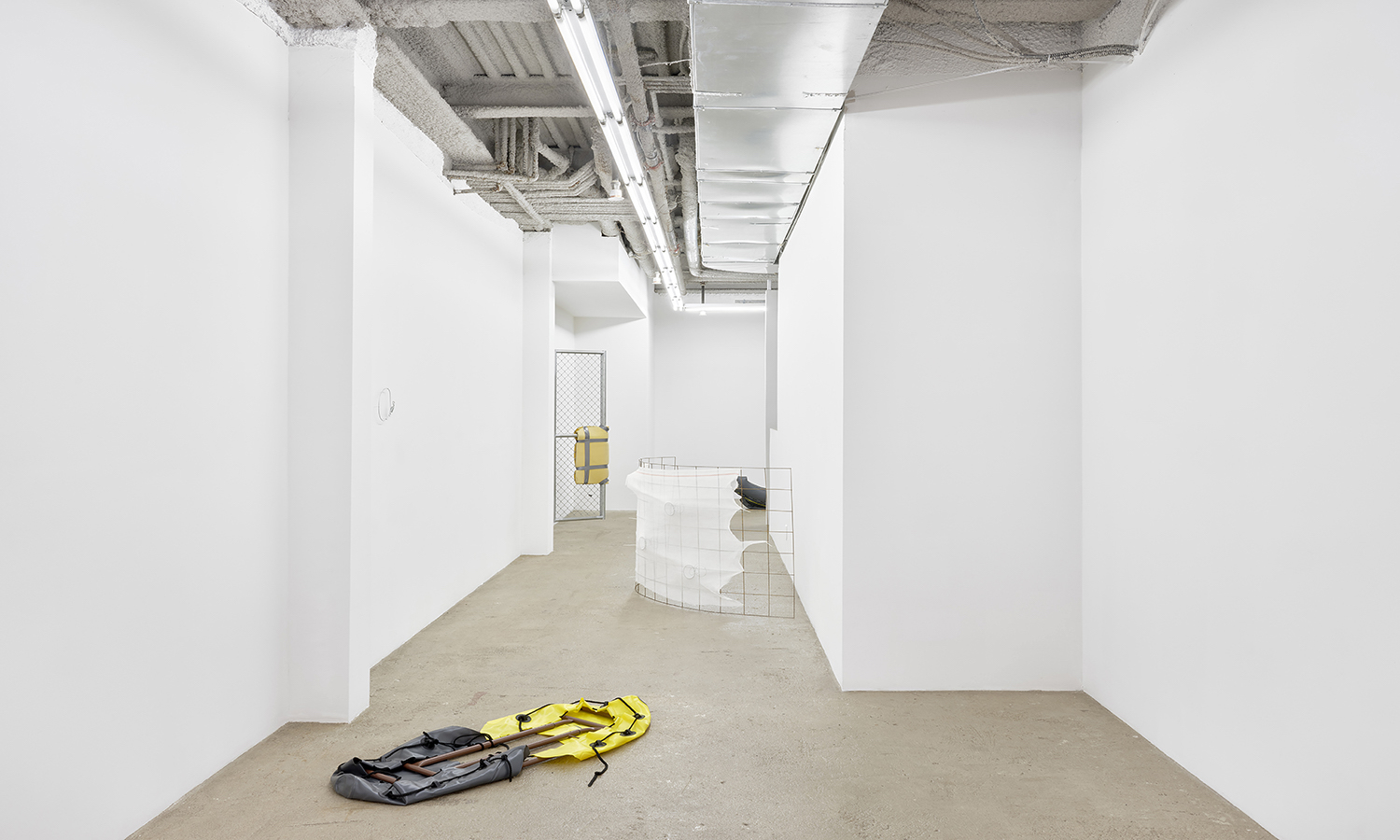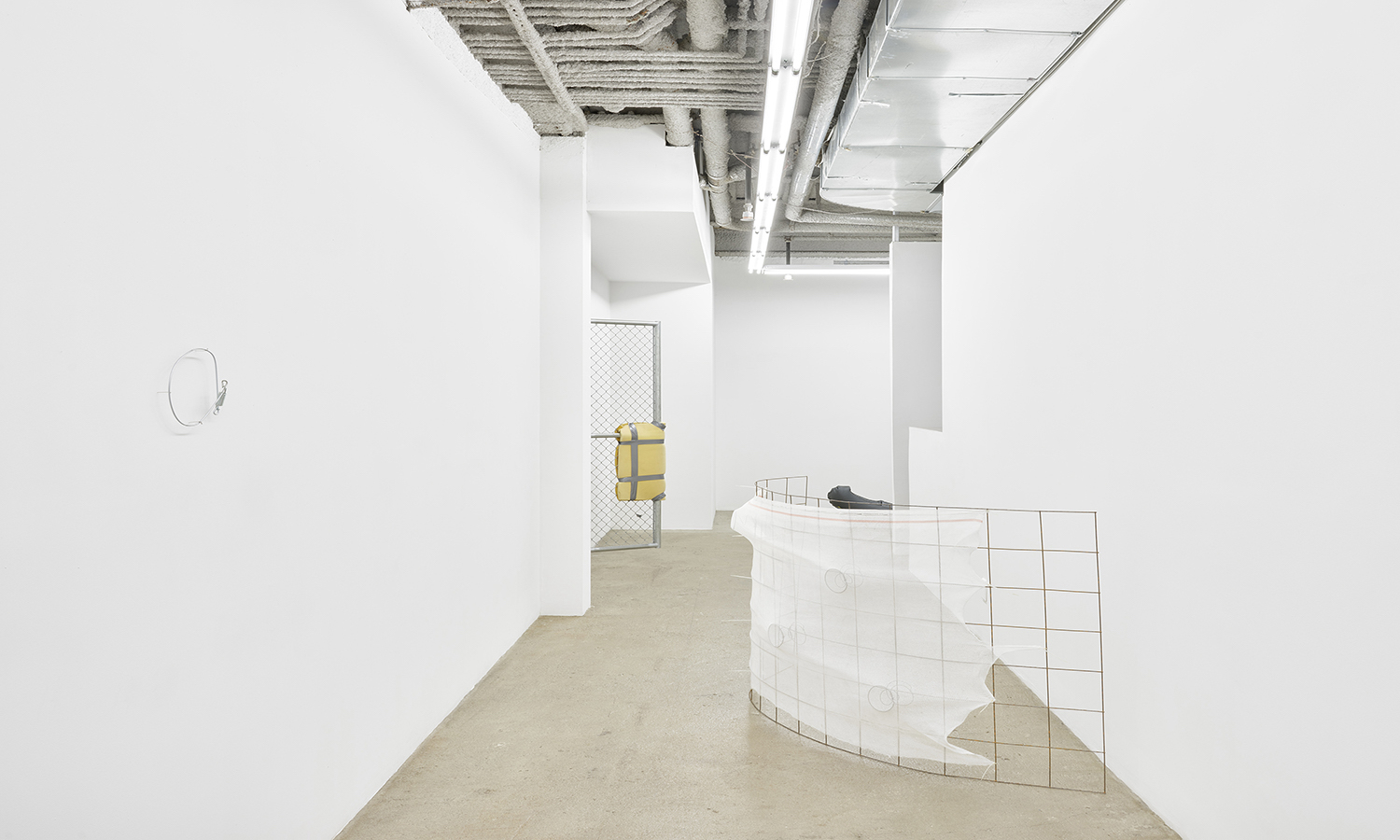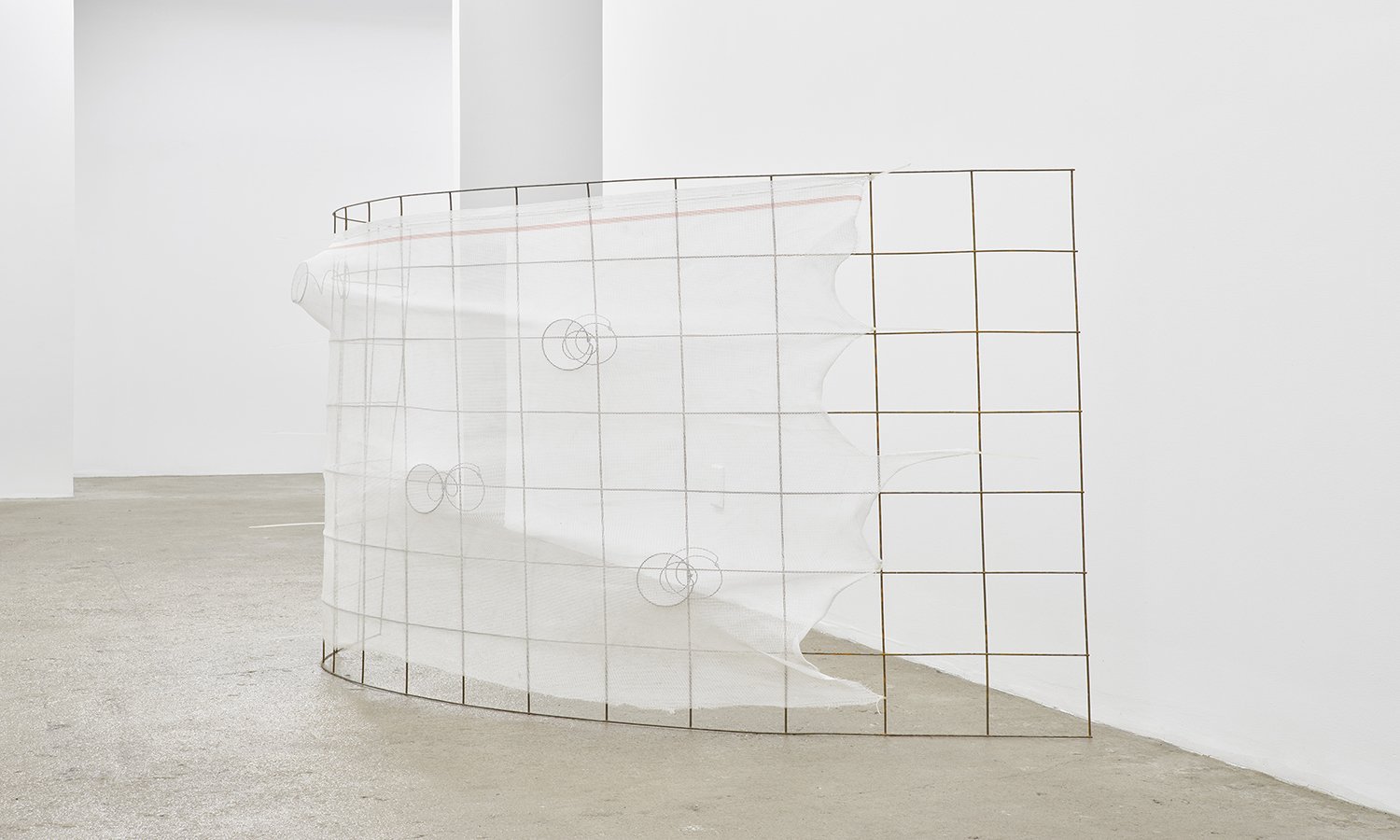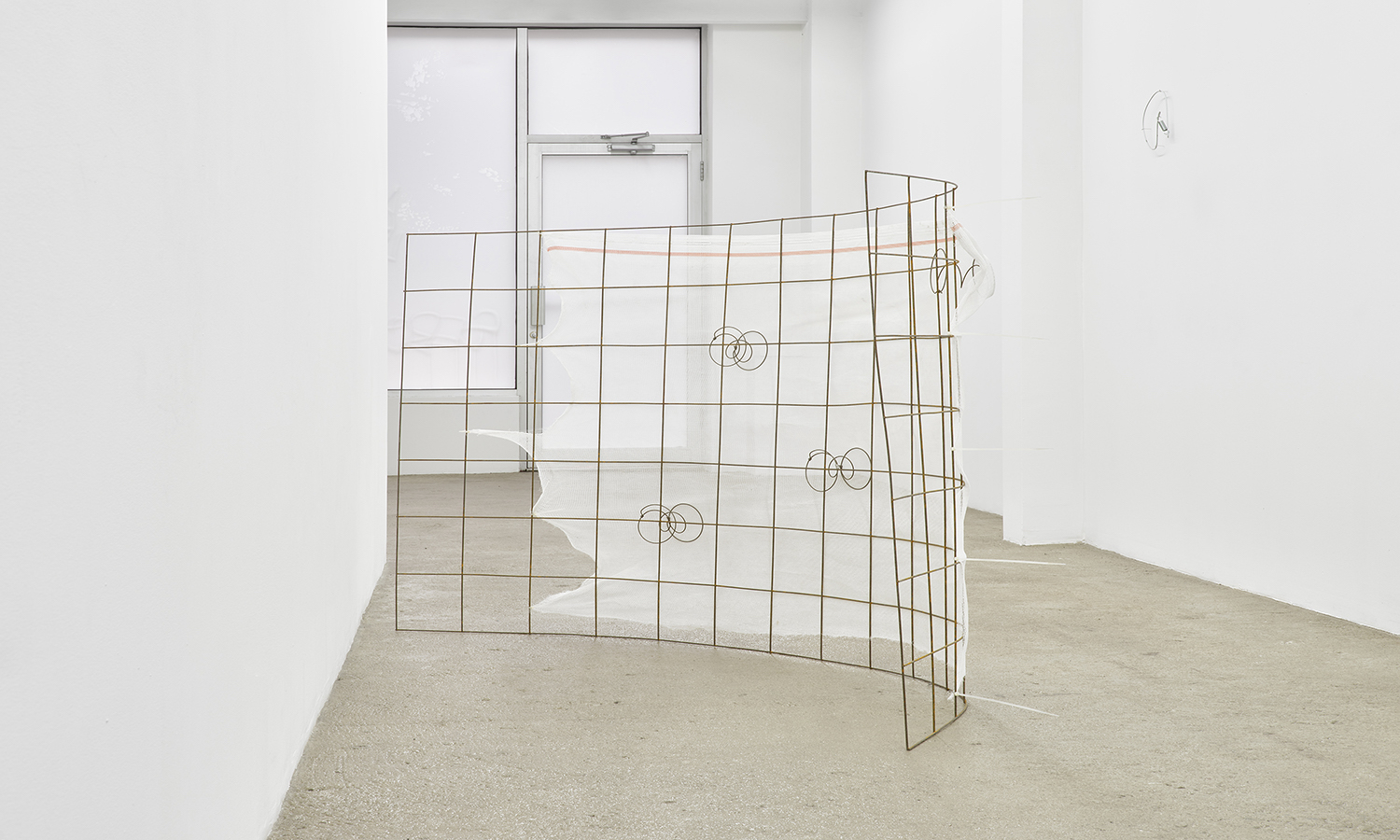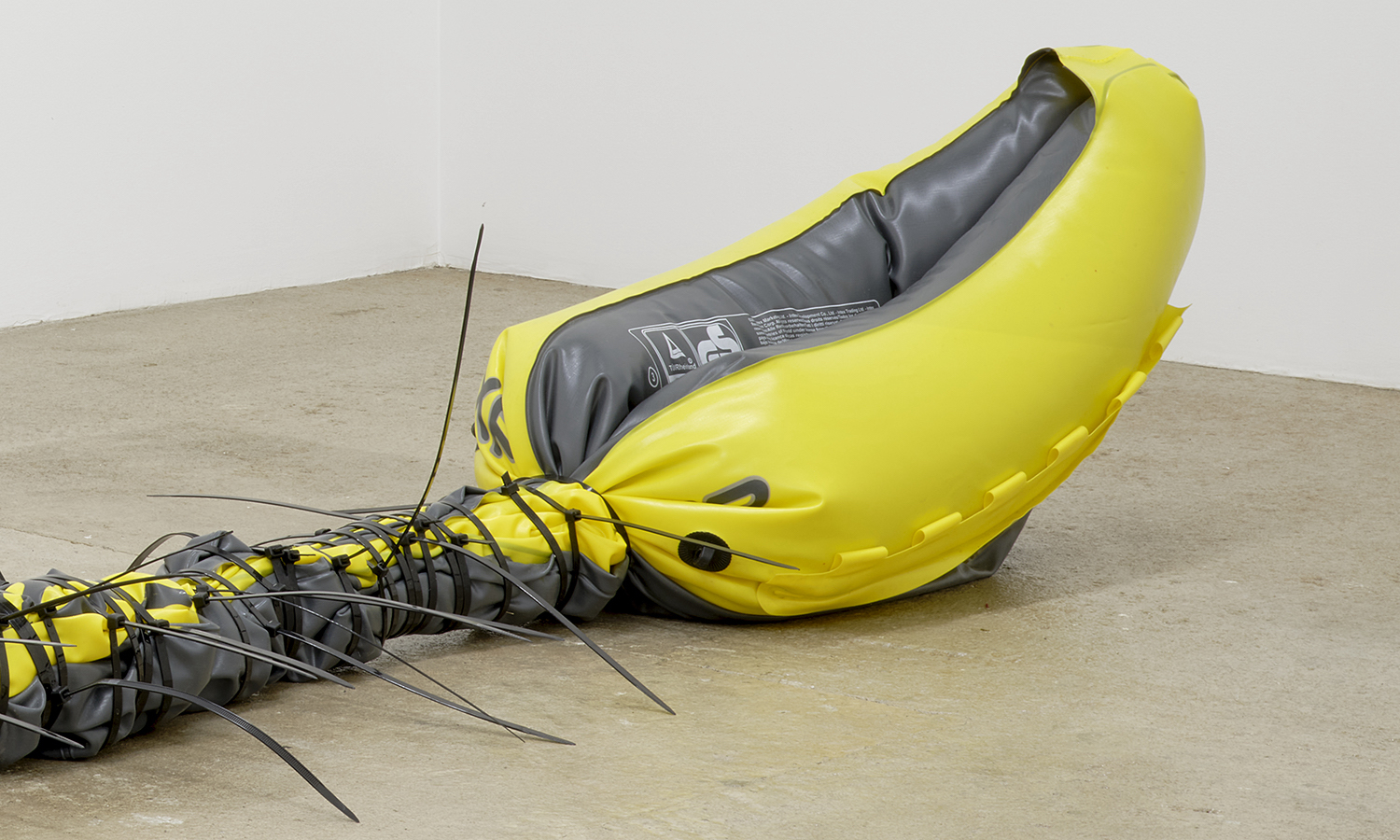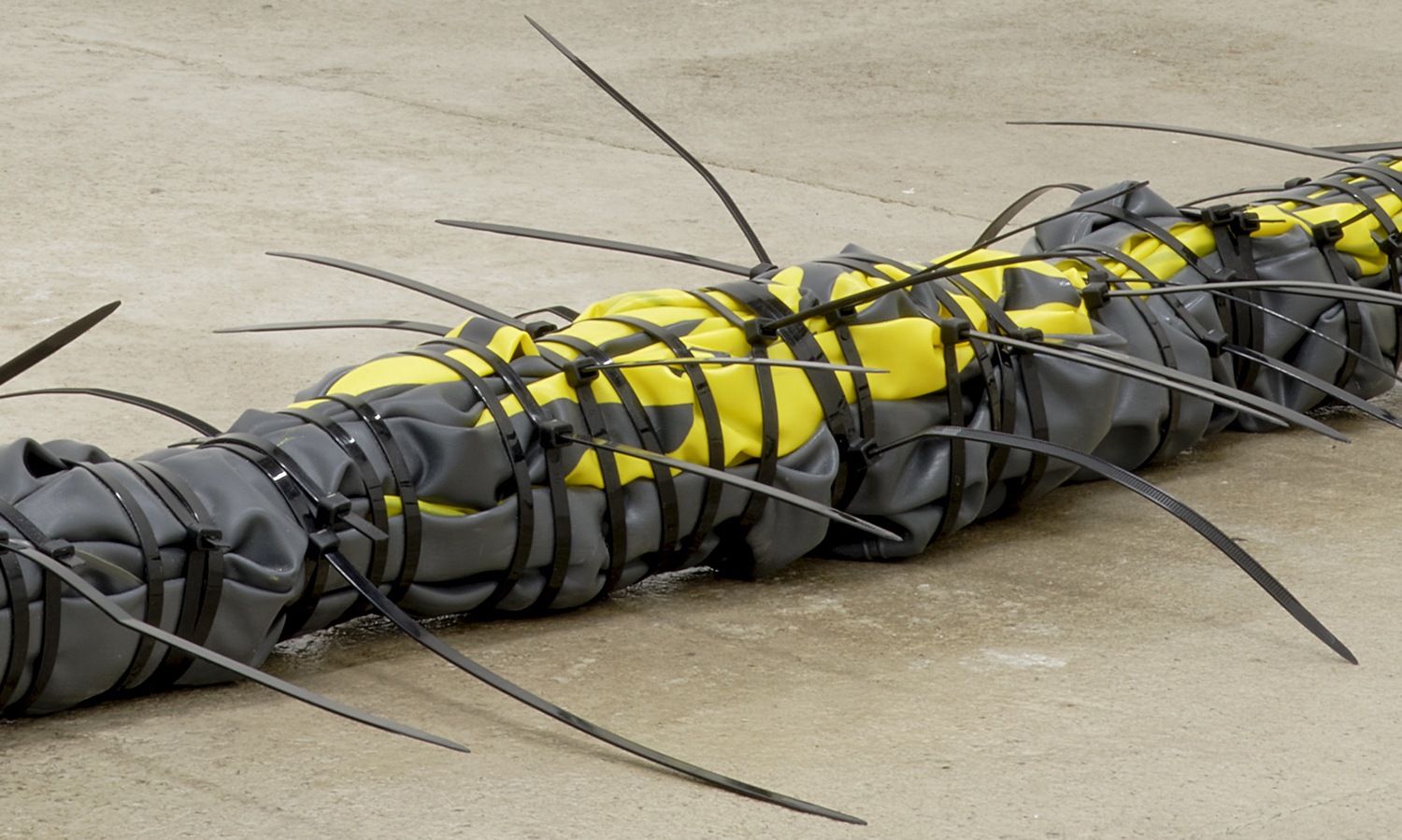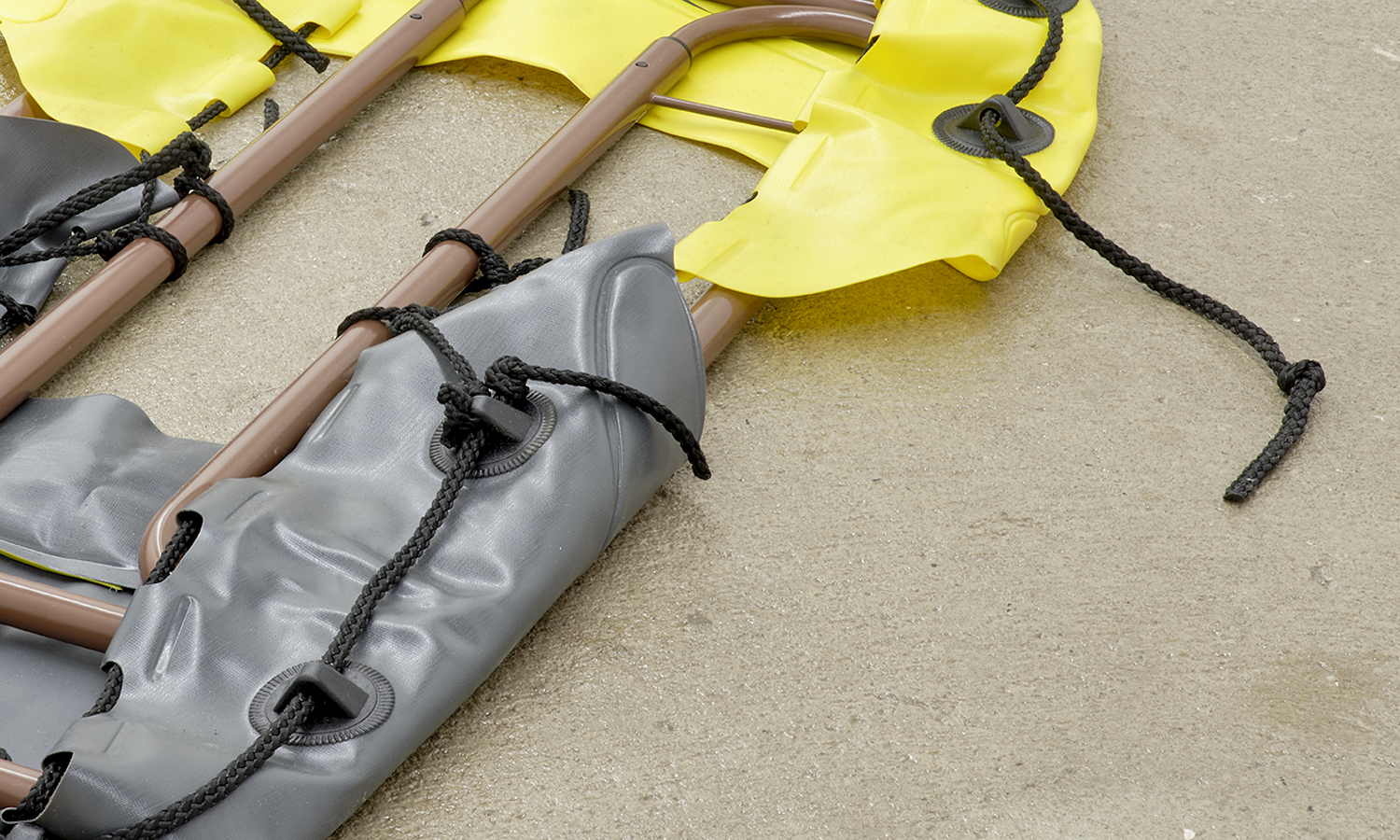Re-mesh sheets, foam, zip ties, felt, wood plank. Metal gate, yellow foam, duct tape. Wire, spring. Bat-Ami Rivlin’s sculptures are titled with industrial incantations, lists of materials that conjure larger systems if only to be released from their terms. While these materials are all described as “found,” some could plausibly have been found together, like the gate of a chain link fence jutting out from the wall that has been softened by the addition of foam padding at hip-height, as if by a worker who had bumped into its lock or latch one too many times. All of these objects were, in fact, previously used or cast off. Yet here, moved off the construction site or out of the factory or beyond the institution, the materials’ new arrangements and functions are either too abbreviated or too exaggerated to be vernacular, the objects too isolated to fully deliver on their promises to insulate, to bind, to soften, or to undergird. Rather, they perform, Rivlin notes, the shadow of a function. Ranked by utility, just below functional objects are demonstrative objects, and just below demonstrative objects are sculptures.
A fractured coherence characterizes the literal and formal vocabularies of these sculptures. Sure, the gate functions, but removed from its neighboring sections of fence, it does not provide or prohibit access. Yes, the insulation will mediate climate fluctuations, but standing on its own, it hardly functions as a barrier. It is because of their conversion to sculptures—objects mean to be circled—that their functions are inhibited. We become more aware that their current presentation is for us; their intended industrial uses would have been both more useful for us and less visible to us. For Rivlin, then, the function of sculpture seems to be to heighten the visibility of those operations that facilitate our presence, our institutions, our habitation. Extract the component, isolate it, and see what its failure tells us about the larger system to which it belonged.
This process might sound as scientific as it does political. Yet this work does not aim to represent changed systems, nor to enact disruption within them. Rivlin does not invent new lives for these remnants of industry, these residues of ever-expanding construction and resolute institutions. Rather, she insists that these materials were designed to not function in any other way, and that such narrow conceptions of how an object can and will be used are problems inherent in capitalist modes of production—a system rife with assumptions about how bodies can and should relate to each other, to objects, to institutions. One of the most enigmatic works on view, an inflatable kayak constricted by dozens of cable ties into the rough shape of a spine with raised fists, is perhaps the best symbol of this idea: It embodies the absurdity of trying to patch a leak in a system destined to fail. And yet we try, repeatedly; Rivlin, in her studio, aims to locate each obstinate object’s capacity for liminal transformation.
– Mira Dayal

